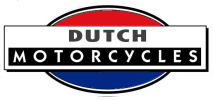




A Dutch production. While being particularly "English" in style and finish, the Simplex is full of novelty although quite free from freakishness.

The riding position of the Simplex is low and central, with the special object of placing the rider on the part of the machine least subjected to vibration
ALTHOUGH the Simplex machines have never been introduced commercially into this country, they have been known to many riders for their general excellence of workmanship through the friendly meetings resulting on the Anglo-Dutch trials, which were so popular before the war.
The present design now before us which is to be placed on the market next year, is of very taking appearance, and embodies very sound principles of frame construction.
An extremely low saddle position, barely twenty-eight inches above the ground,. is possible with the design, which is of duplex construction throughout, and has continuous members running direct from the steering head to the back fork ends.
The saddle is placed as nearly as possible midway between the front and back wheels, since it is here that the minimum of road vibration is felt by the rider, the machine, as it were, oscillating about the centre point, which consequently deviates less than any other part from a path parallel to the ground during its forward travel.
A Sporting Touring Model.
Druid Mark II forks are fitted in conjunction with flat handle-bars of the semi-T.T. type, and the latter are fitted with Pedley pneumatic grips, which we know from experience are extremely pleasant to the hands, especially on long journeys.
A 3 1/2 h.p. twin M.A.G. engine is fitted, with magneto placed in a well protected position behind the rear cylinder. Lodge weatherproof plugs are used, while gas is supplied by an Amac carburetter.
Transmission is by chain and belt through a three-speed gear box with handle-bar-controlled clutch, while a powerful kick starter is fitted on the right-hand side.
Transmission and Brakes.
The final drive is also on the off side, somewhat similar to that of the 4 h.p Douglas, but the large diameter pulley and belt lie within the duple.x frame which is extremely wide - this construction avoids the use of cranked tubes necessary on most conventional designs where the transmission is outside the frame members.
A belt guard is provided, and as the belt centres are wider than on most countershaft machines, the bugbear of belt slip on low gear should be largely obviated.
The petrol and oil tanks are separate, the latter being at the top of the frame and fitted with a Benton and Stone oil pump and drip feed. Immediately below the steering head, and occupying the triangular space between the oil tank and the top of the engine, is a metal receptacle suitable for carrying tools or spares.
Brakes follow standard British practice, that on the front wheel being a Bowden, while the rear is of the compensating type working in the V of the belt drum - it will be noticed that enormous leverage is obtained both on the pedal situated beside the right-hand aluminium footboard, and also on the arm of the brake itself.
Altogether the design is clean and workmanlike, and reflects credit on the makers, the Simplex Cycle and Motor Co., Amsterdam, Holland.
The Motor Cycle October 9th, 1919.